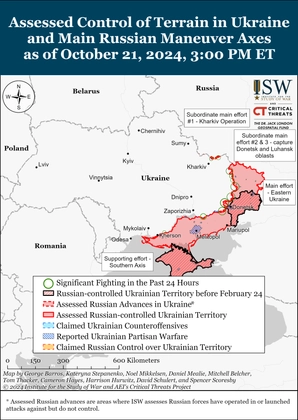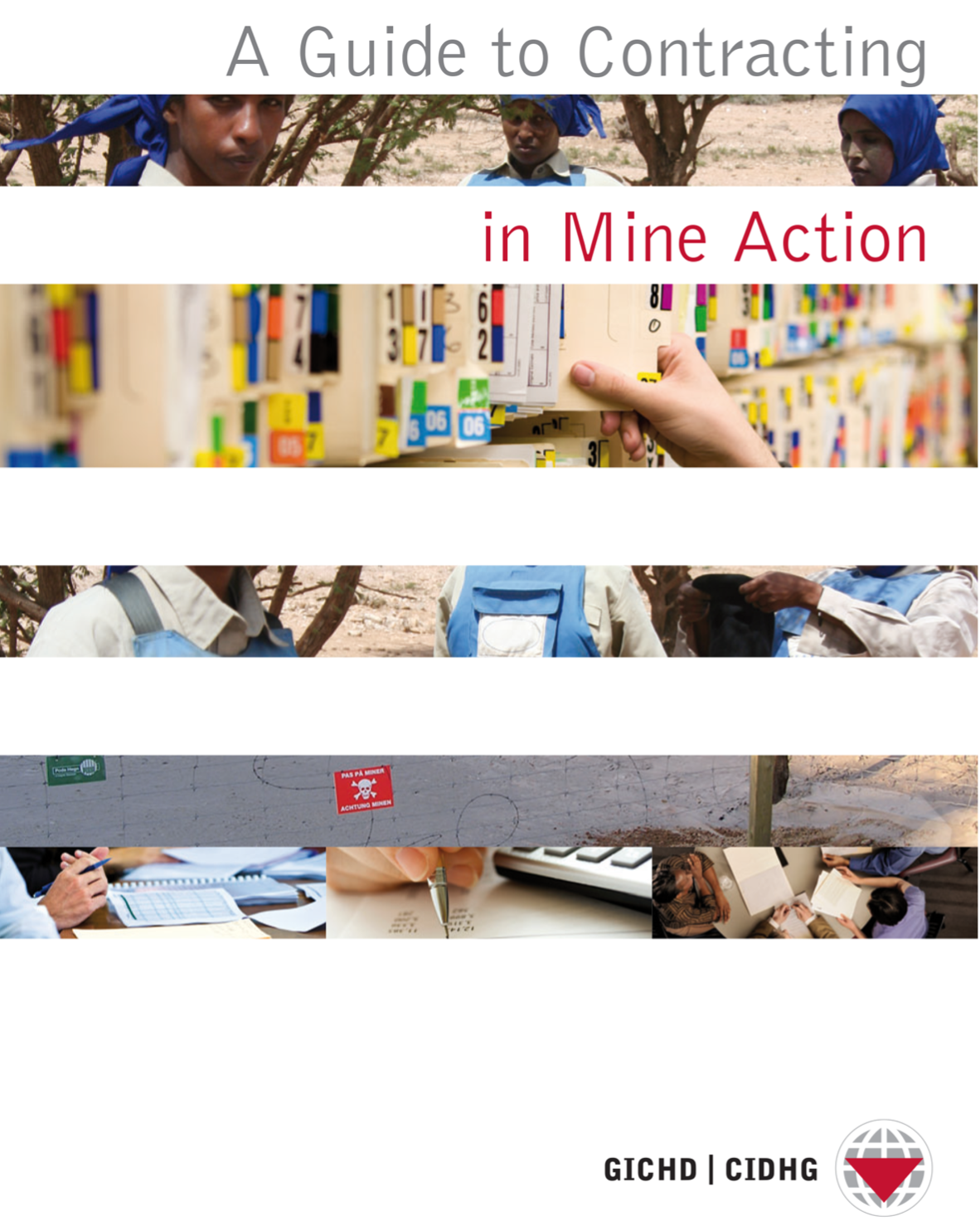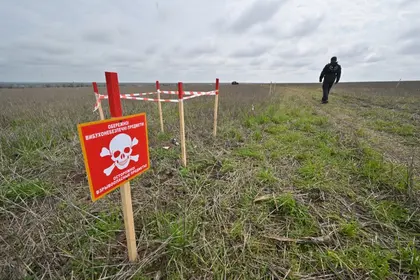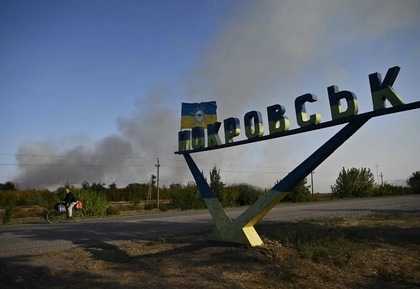What is liability?
It is a basic principle of law that, if you cause harm, intentionally or not, you are legally responsible - you are ‘liable’. This applies to your actions (something you do) or your inaction (something you failed to do) or the actions of others, who do what you told them to. If you’re part of a group, then you’re all liable - either ‘jointly and severally’ (you’re all held equally liable) or ‘severally’ (liability is limited to each individual’s part).
JOIN US ON TELEGRAM
Follow our coverage of the war on the @Kyivpost_official.
Consideration of possible liability is why contract terms, for even the simplest product or service, are: pages long, full of wherefores, whereases, wheretos, etc.
Where does liability start?
That’s a question with which the law constantly struggles. While we are mainly interested in the liability that arises during the demining process, the ‘liability chain’ begins long before we get to the point of clearing a single landmine.
The manufacturers
Human Rights Watch argues that landmines are products which kill indiscriminately and their manufacturers should be held accountable, just as the tobacco industry was. They argue that a “class action”, against landmine manufacturers would result in a multi-billion-dollar payment which could fund global demining - forgetting that the US Tobacco Master Settlement Agreement (MSA), which penalized the tobacco interest over $200 billion, took almost 50 years to resolve. Mine-affected nations couldn’t wait that long.

ISW Russian Offensive Campaign Assessment, October, 22, 2024
The users
The liability that falls on those who use landmines seems, on the face of it more clear cut, as their use is covered by ‘customary international law and treaties’: the 1983 convention on the prohibitions of certain conventional weapons, the 1997 “Antipersonnel Mine-Ban Treaty” and the 2008 convention on cluster munitions.
The 1996 amendment to the 1983 convention prohibits: the use of non-detectable anti-personnel landmines (APL); laying APL in unmarked areas unless they are self-destructing; prohibits the use of APL against civilians; requires users to remove APL when a conflict ends.
This places the liability for the removal of the landmines fully on the users of landmines. For instance, after the Gulf war, Iraq was forced to pay $700 million for the clearance of the one million mines it had laid in Kuwait.
The problem is that, during Russia’s war on Ukraine, both sides have laid mines. When peace eventually comes in Ukraine, can Russia could be held accountable?
The contaminated State
UN policy places responsibility, for demining firmly on the mine-affected State, this includes liability for victims of landmines and ERW. Therefore, Ukraine must not only organize and deliver the demining of 160,000 plus square kilometers mine contaminated land, but is liable for the safeguarding of its citizens through explosive ordnance risk education and by clearly marking and fencing contaminated areas.
Liability Within the Demining Process
Having raised and dispensed with the ‘high level’ stuff let’s now look at the nitty gritty of where and how liability can fall (or be assigned) during demining.
Under common law, the owners of land and ‘premises’ have certain duties to protect others from the dangers that exist on their properties. This does not exclude the state’s liability unless it has taken legislative steps to transfer its liability to the landowner – I don’t believe such legal protection currently exists in Ukraine.
‘Amateur’ deminers
There have been recent reports that farmers were taking the initiative to try to clear their land of mines, either by hand or through the use of improvised demining machines (as reported by Kyiv Post). While understandable, because of the size of the problem and delays in getting help, because of a general lack of demining resources, this does raise potentially huge issues of liability that, in the future, could have lawyers rubbing their hands in glee.
Potential liability exists in all aspects of the use of these machines. Unlike military or civilian produced demining equipment they have not been tested or certified to confirm how efficient they are or how ‘mine-proof’ they actually are; operators have not been trained in anything other than driving the machine and are learning ‘on the job’; no provision is made for the safeguarding of recovered mines and UXO until destruction can be carried out; no checks that all dangerous items have been recovered; there is no protection for those employed to work on the land after ‘clearance.’
The reality is that anyone injured or anything damaged during any and every aspect of this process would have a claim against, not only the farmer who owns the land, but also the State and its representatives who have allowed such activity to go ahead.
‘Professional’ deminers

The primary aim of demining, as envisaged by the UN, is land release – which includes:
· The identification of land that is not contaminated by mines and/or UXO through a survey process thus avoiding the expense of carrying out unnecessary clearance;
· Demining of that land that has been contaminated by mines and/or UXO that is appropriate for both the type of contamination and the future use of the land;
The State will normally contract out the actual demining process, either to commercial entities or specialist NGO, but should retain control of the final land release process.
Contracts will ensure that the clearance agency has the necessary experience and skills to demine to, at least, the standards expected by International Mine Action Standards (IMAS). Even so, it is in its own best interests that the State ensures that those standards are fully applied during all demining operations through a Quality Assurance process of its own.
The demining contractor will be liable for the protection of its own personnel and equipment but also to the local civilian population while carrying out its actual clearance operations. This will normally be addressed through insurance, for which there is a thriving international industry. Once again it falls to the State to ensure that the insurance policy provides adequate levels of protection and is underwritten by a reputable provider.
Residual Risk
At some stage the demining contractor will hand-over the area it has cleared. While a contract may place a ‘call-back’ requirement on the contractor, at some point, unless there is negligence which can be proved, all liability for the task area will pass to the State. No matter how good the demining contractor is, there is always a risk that something is left behind after clearance. Who will have liability for this?
The handover of cleared land to the State, community, land owner or end user is an aspect of liability that requires particular consideration. An explosive item may have been missed, moved into the area by flooding or may be below the anticipated clearance depth.
Some organizations refuse to use the phrase ‘mine clearance’ but prefer the term ‘mine risk reduction.’ UXO from both world wars and earlier and later conflicts are frequently encountered decades after the war has ended.
What does this mean for Ukraine?
In the April 3 article, ‘The Hidden Killers – Clearing Ukraine’s Landmines and Explosive Remnants of War,’ Kyiv Post indicated the steps Ukraine was taking and what was still needed to be addressed if it was to tackle the mind-blowing problem it faced as a result of the mines and ERW contamination it faced.
Like it or not, in the eyes of the international community this will become Ukraine’s problem alone in the future. In the meantime, preparations must continue in earnest to:
· Ensure the agencies that have or will be established to manage the demining and other mine action processes are fully prepared and up to the task;
· Consider what protections are needed for the state, end users and the community for mine action activities that are already being carried out and will be in the future, in its name;
· Ensure that its own mine action standards are fully prepared in line with the threat posed by ERW and the intended end use of cleared areas (on a case-by-case basis);
· Take the legal and other advice it needs in the development of demining contracts to ensure that liability is assigned appropriately
You can also highlight the text and press Ctrl + Enter






